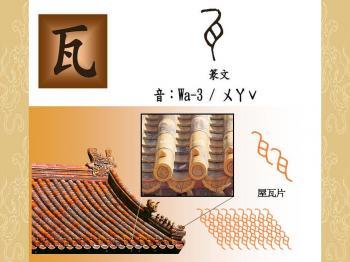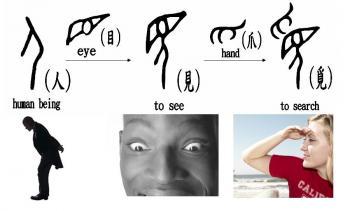In this new series of articles exploring Chinese characters, 一 (yī) is the first character we will introduce. It is used to represent the concept of one and first.
一, however, in Chinese culture, contains a deeper meaning, because it represents ancient Chinese people’s view of the universe. Many of you may have heard “Tao,” and “Taiji.” Ancient Chinese people believed that before the formation of the universe there was chaos and infinity. 一 indicates that the universe was formed in a moment. Tao was then generated from 一. At the same time, yin and yang were generated. Heaven and Earth and everything in the universe were then evolved from the interactions of yin and yang and they are forever lasting. Therefore, 一 also contains the meaning of unity and whole.



Following on from the understanding that in the Chinese language 一 plays the role of creating Heaven and Earth, 一 can, therefore, represent the concept of space. For example, by putting a short horizontal line or a vertical line above 一, it becomes the ancient character, 上 (shàng), meaning up; if you put a short horizontal line or a vertical line under 一, it is the ancient character, 下 (xià), meaning down.


In particular, the space above 一 often indicates the divine world, and the space below 一 indicates the human world. Sometimes, the space above 一 indicates yang, and below indicates yin. Thus, Chinese characters can actually show different spatial dimensions. We will use examples to illustrate this later when introducing related characters.
Let us investigate further the process of creating Chinese characters. We now know that 上 means up, and 下 means down. The character 卡 (kǎ), shown below, combines 上 and 下. Can you guess what 卡 means?
It is used to express “a check point,” such as 關 (guān; pass) 卡 and 邊 (biān; border) 卡. The character 卡 also shows that things cannot move either up or down. Thus, another meaning of 卡 is to block.
In modern usage, 卡 is also used to transliterate foreign terms. As an example, 卡 is used for the translation of the English word, card. Birthday card is 生 (shēng; birth) 日 (rì; day) 卡. 卡通 is the Chinese translation for cartoon. 通 (tōng) means connection. Because 卡 in modern times already has the evolved meaning of paper and pictures, thus 卡通 becomes the perfect translation for cartoon, literally meaning “connecting pictures.”



This Chinese translation not only contains the sound of the English word, but also indicates the meaning. This example shows that after each Chinese character is created, the meanings have built up, developed, and extended over the course of history. Alphabetical languages, such as English, have to constantly create new words in order to meet the needs of changes in society. Commonly used Chinese characters, however, have been around for two thousand years.




Friends Read Free